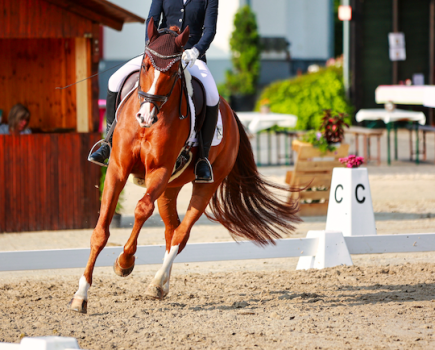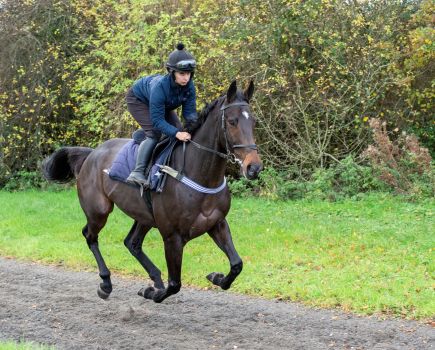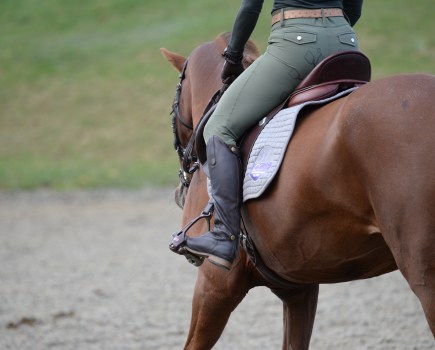Judges at prelim and novice level dressage are looking for the basics, done well. That means something like a wonky circle that’s too big or too small will lose you valuable marks in a test.
Trainer and judge Nikki Herbert advises spending time at home honing the accuracy of your shapes, turns, transitions and paces in order to help your marks and confidence soar. Read on for more of her advice.
1 Make the warm up count — especially at home
Your warm up is your chance to encourage your horse to loosen up and stretch, but keep in mind the scales of training as you do so: rhythm, suppleness, contact, impulsion, straightness, and collection.
As you warm up, ask for your horse to keep his neck a little lower, aiming to stretch the base of the withers first. To do this, your horse needs to take his nose forwards in front of the vertical, not sit behind it.
As you do this, assess how the contact feels and whether you are holding equal weight down each rein before progressing onto the exercises.
2 Nail 20m circles
Riding an accurate 20m circle is harder than it might sound. Try measuring out the four ‘points’ of your circle to help you visualise how wide it needs to be.
Now count how many walk, trot or canter strides it takes to do one half of your circle and then see if the other half matches.
If you want to challenge yourself further, use the markers at the ‘points’ of your circle to test the accuracy of your transitions by asking for a change of pace between them.
3 Hone smaller circles
You can rely on the sides of the arena when riding a 20m circle, but things can go pear-shaped when you’re asked to ride a 15m or 10m circle.
Start by positioning your markers at the four ‘points’ of your circle around X as a guide, and repeat the above exercise counting how many walk, trot and canter strides it takes to do one half of a circle and then check the other half matches.
Try adjusting the pace until you ride both halves of the circle the same.
Smaller circles are harder for your horse, so do them in walk first and aim to get your horse wrapped around your inside leg.
Take regular breaks and build up the number of repetitions slowly to help his fitness.
If your horse is struggling to trot a 10m circle, try sitting trot as this will shorten your horse from behind and encourage him to lift his feet more.
4 Don’t forget your outside rein
The outside rein is important to riding accurate circles as it limits bend and allows you to keep your horse’s cheek in line with his shoulder rather than twitching to the inside.
Read more of Nikki’s training advice in the October issue (483) of Your Horse
About the expert: Nikki Herbert BHSI (Level 5 Performance Coach) was the National Director of Pony Club training for 16 years and is now a selector for Britain’s under-21 dressage teams and the Eventing European Cup CCI3*-S team. She’s an accredited British Eventing Coach, a List 2A British Dressage judge and sits on the British Dressage Judges’ Committee.
Look what’s inside the latest issue of Your Horse










